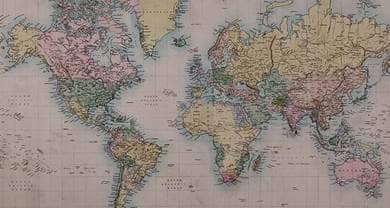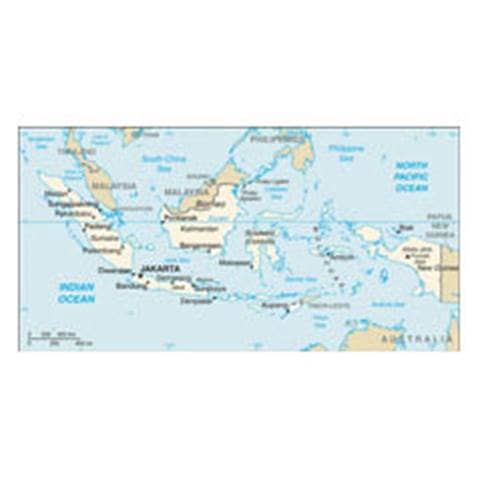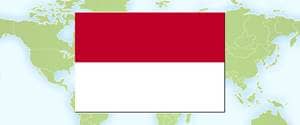- Trending:
- Easter
- |
- Lent
- |
- Forgiveness
- |
- Resurrection
- |
- Joy
- |
- Feminism

RELIGION LIBRARY
Indonesia

An archipelago of more than 17,000 islands, the country has an area of approximately 700,000 square miles and a population of 245 million.
According to a 2000 census report, 88 percent of the population is Muslim, 6 percent Protestant, 3 percent Roman Catholic, 2 percent Hindu, and in total less than 1 percent Buddhist, followers of traditional indigenous religions, Jewish, and other Christian denominations. Some Christians, Hindus, and members of other minority religious groups argued that the census undercounted non-Muslims.
Most Muslims in the country are Sunni. The two largest Muslim social organizations, Nahdlatul Ulama (NU) and Muhammadiyah, claimed 40 million and 30 million Sunni followers, respectively. There are also an estimated 1 million to 3 million Shi'a.
Many smaller Muslim organizations exist, including approximately 400,000 persons who subscribe to the Ahmadiyya Qadiyani interpretation of Islam. A smaller group, known as Ahmadiyya Lahore, is also present. Other Islamic minorities include al-Qiyadah al-Islamiya, Darul Arqam, Jamaah Salamulla (Salamulla Congregation), and members of the Indonesian Islamic Propagation Institute.
The Ministry of Religious Affairs estimates that 19 million Protestants (referred to locally as Christians) and 8 million Catholics live in the country. The province of East Nusa Tenggara has the highest proportion of Catholics at 55 percent. The province of Papua contains the highest proportion of Protestants at 58 percent. Other areas, such as the Maluku Islands and North Sulawesi, host sizable Christian communities.
The Ministry of Religious Affairs estimates that 10 million Hindus live in the country. Hindus account for approximately 90 percent of the population in Bali. Hindu minorities (called "Keharingan") reside in Central and East Kalimantan, the city of Medan (North Sumatra), South and Central Sulawesi, and Lombok (West Nusa Tenggara). Hindu groups such as Hare Krishna and followers of the Indian spiritual leader Sai Baba are also present, although in smaller numbers. Some indigenous religious groups, including the "Naurus" on Seram Island in Maluku Province, incorporate Hindu and animist beliefs into their practices. Many have also adopted some Protestant principles. The Tamil community in Medan represents another concentration of Hindus.
The country has a small Sikh population, estimated at between 10,000 and 15,000. Sikhs reside primarily in Medan and Jakarta. Eight Sikh temples (gurdwaras) are located in North Sumatra, while Jakarta has two Sikh temples with active congregations.
Among Buddhists, approximately 60 percent follow the Mahayana school, Theravada followers account for 30 percent, and the remaining 10 percent belong to the Tantrayana, Tridharma, Kasogatan, Nichiren, or Maitreya schools. According to the Young Generation of Indonesian Buddhists, most believers live in Java, Bali, Lampung, West Kalimantan, and the Riau islands. Ethnic Chinese make up an estimated 60 percent of Buddhists.
The number of Confucians remains unknown because at the time of the 2000 national census, respondents were not allowed to identify themselves as such. The Supreme Council for Confucian Religion in Indonesia (MATAKIN) estimated that ethnic Chinese made up 95 percent of Confucians with the balance mostly indigenous Javanese. Many Confucians also practiced Buddhism and Christianity.
An estimated 20 million persons in Java, Kalimantan, Papua, and elsewhere practice animism and other types of traditional belief systems termed "Aliran Kepercayaan." Many of these persons combine their beliefs with one of the government-recognized religions and are thus registered as following a recognized religion.
There are very small Jewish communities in Jakarta and Surabaya. The Baha'i community reported thousands of members, but no reliable figures were available. Falun Dafa, which considers itself a spiritual organization rather than a religion, claims between 2,000 and 3,000 followers, nearly half of whom live in Yogyakarta, Bali, and Medan.
| Population | Population (2009 est.) 240,271,522 |
| Religious Demographics | Muslim 86.1%, Protestant 5.7%, Roman Catholic 3%, Hindu 1.8%, other or unspecified 3.4% (2000 census) |
| Ethnic Groups | Ethnic Groups Javanese 40.6%, Sundanese 15%, Madurese 3.3%, Minangkabau 2.7%, Betawi 2.4%, Bugis 2.4%, Banten 2%, Banjar 1.7%, other or unspecified 29.9% (2000 census) |
| Languages | Languages Bahasa Indonesia (official, modified form of Malay), English, Dutch, local dialects (the most widely spoken of which is Javanese) |
| Country Flag |  |










